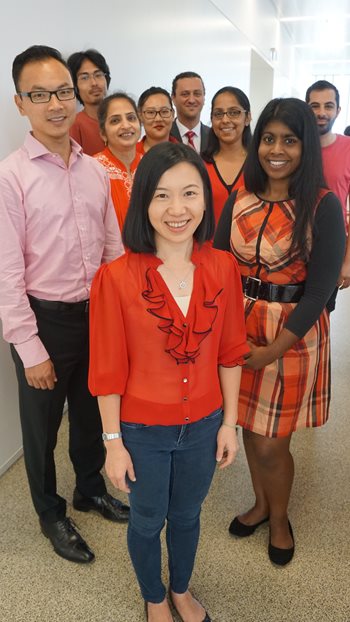February 14, 2016 Print
Heart researchers at The Westmead Institute say there is a tantalising possibility that medical science will soon be able to repair heart muscle damaged by heart attack.
 Dr James Chong (front left) heads the Westmead Institute's Heart Research Centre team (pictured)
Dr James Chong (front left) heads the Westmead Institute's Heart Research Centre team (pictured)
Researchers from The Westmead Institute are investigating stem cell therapy as an alternative treatment for people post-heart attack to repair damaged tissue and reduce the risk of future heart failure.
Speaking on Heart Research Day, The Westmead Institute’s Cardiac Regeneration Group Leader and Consultant Cardiologist at Westmead Hospital Dr James Chong said: “Cardiovascular diseases are the greatest non-communicable cause of mortality worldwide and is leading to an increased burden of heart failure.”
“I believe the use of cellular therapies to stimulate regeneration of the failing heart has the potential to significantly change this field.”
“I believe the use of cellular therapies to stimulate regeneration of the failing heart has the potential to significantly change this field.”
A pilot study is currently underway in animal models at the Institute which involves injecting cells that can become blood vessel cells or potentially heart muscle cells directly into hearts that have been damaged by heart attack.
Currently, after a heart attack, stents are used to expand arteries and release blockages – usually caused by cholesterol and fat – to restore regular blood flow.
However, a significant amount of damage can occur to the heart before blood flow is restored.
Additionally, collagen fibres laid down as the primary way the heart heals the heart attack wound are typically inflexible and can lead to problematic stiffness. Combined with the damaged heart tissue, a spiraling decline of heart function and the development of heart failure ensues.
Although progress has been made in slowing the decline to heart failure and in improving pump function with medications in some cases, there is still no effective treatment for the severe heart failure after heart attack.
The study at the Westmead Institute uses pluripotent stem cells - which have superior plasticity - to repair the damaged tissue. It follows on from previous research conducted by Institute scientists into stem cell therapy for post-heart attack patients.
In 2014, a team led by Dr James Chong in the United States regenerated heart muscle for the first time by grafting heart muscle cells developed from pluripotent stem cells.
The significant breakthrough, published in the prestigious scientific journal Nature, was described as a “bold new step” towards solving the growing epidemic of chronic heart failure, which kills more than 20,000 Australians each year.
The latest study, conducted by Dr Masahito from the Institute’s Centre for Heart Research, aims to optimise the approach and build on international research collaborations.
According to Dr Masahito, preliminary study results show improved heart function, however significantly more testing using a variety of techniques is required to confirm whether the therapy is successful.
Cardiovascular disease is the leading cause of death and disease burden in Australia. Sunday 14th February is Heart Research Day – raising awareness about the importance of heart research to reduce the devastating impact heart disease has on families and the community.